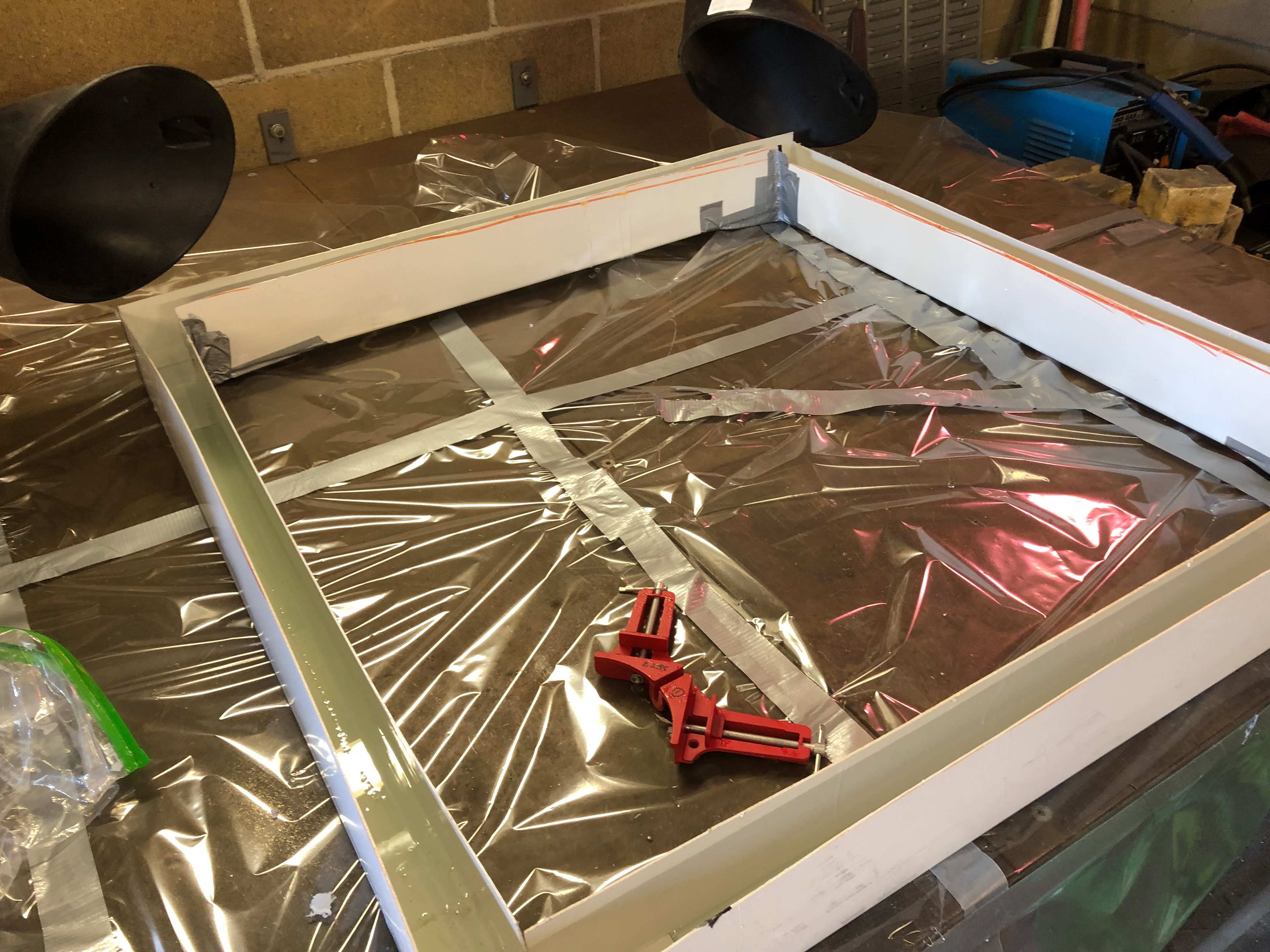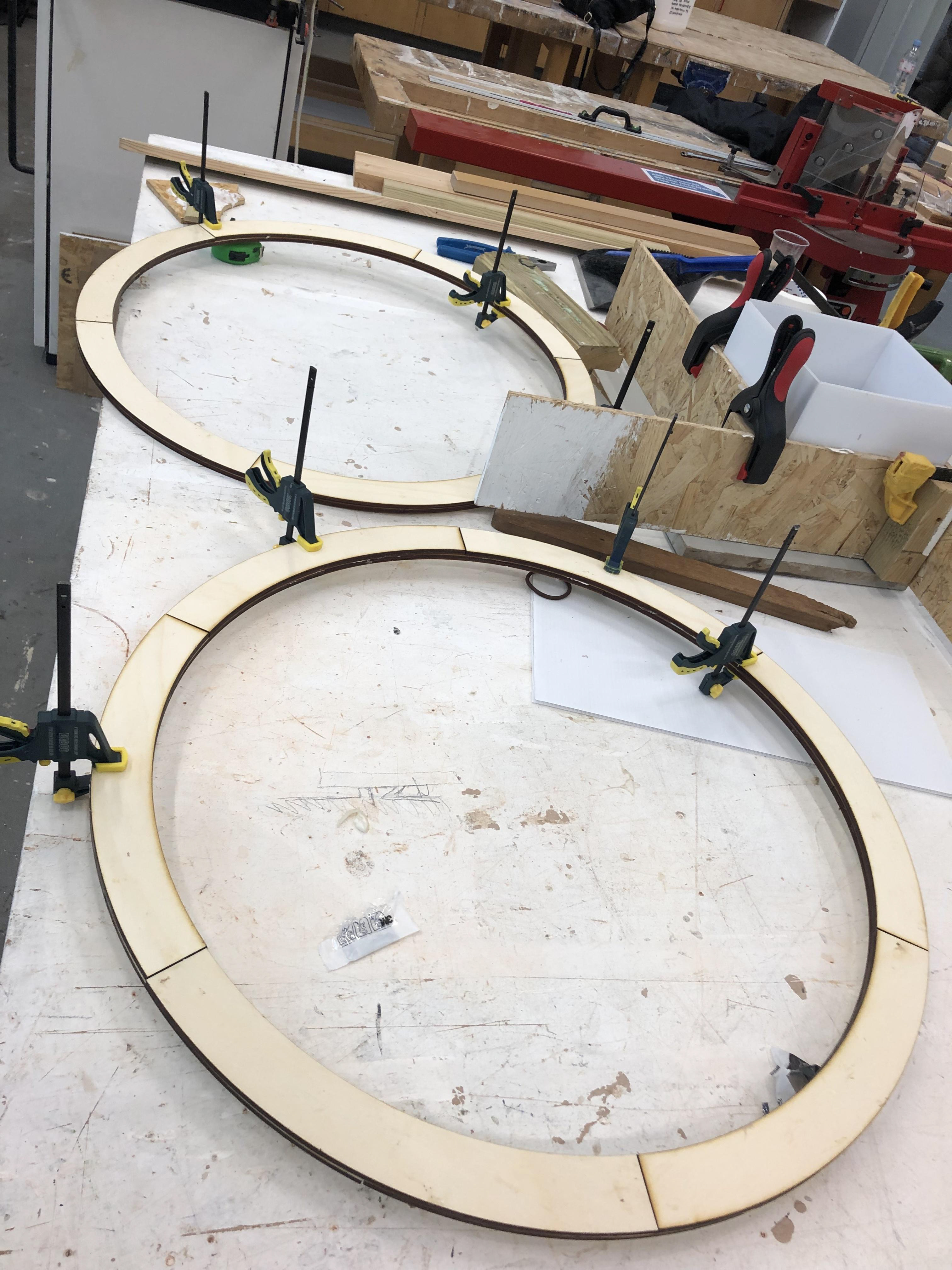Behind The Scenes:
Creation Process
Creating artwork for the final degree show has resulted in a vast amount of experimentation and failure. Throughout the first semester my research into Minimalism and phenomenology became extensive as my creation process focused on expansion of space and experience. Using light as a main medium to create a colour saturated room. Inspired by the Minimalist light and space artists in the 60s, my art began to explore geometric shapes and projection. The art became more involved with the importance of form and shadows as opposed to focusing on manipulating the space.




My art utilised canvas frames and wooden batons. The experimentation process began with canvas frames due to the accessibility of material. It was also a nod to my painterly side. Creating installation art that involves geometric shapes and light is a very difficult transition for me. I find comfort in creating a multitude of paintings and then deciding on a final picture to display. Whereas reducing the materials to a minimal standard has sometimes made me doubt my creation throughout the first semester. What happens if nobody gets my work? What happens if people don't appreciate my work? Is this too simple?
Peer critiques allowed for conversation to discuss about the potential my light artwork can go. Hearing my fellow students appreciate my art was somewhat validating. Unfortunately, my satisfaction with creation was far from evident. I was still disheartened by incorporating lights onto frames. The issue with creating this type of art, utilising ready-made items was, I didn't make the art and what I was displaying was replicas of artwork that had already been realised by the artists during the 60s. This effectively meant that this was not my own artwork.


Within the attempt to rediscover satisfaction with my artwork I decided to try and create resin frames. This was one of the first important failures of my creation within the first semester. The resin was too brittle to be released from the PVC, resulting in the frames breaking. Incorporating resin into my art is something that I desired to do but not successfully knowing how. It became apparent that forcing a material to create a desired outcome was not going to work. So I needed to consider what my art is about and what I aim to achieve.


During the second semester I exhibited a series of installations. These installations were created using canvas frames and motion sensor lighting. Finally artwork I was satisfied with. The lights were triggered by movement and the lights from the surrounding sculptures. One by one, the sculptures became illuminated. Theatricality was an element that was emphasised as a result of using lights that illuminated within a sequence. This exhibition realised that the effectiveness of these outcomes would of not been visible without utilising motion sensor lighting. Hearing feedback from members of the public and peers made me realise that what I am creating is not pointless.







After exhibiting I have developed a respect for the material I am using. I have decided to create my own frames, creating large wooden shapes. During this creation process I have learnt a significant amount about refinement and the importance of presentation. Creating my frames since March 2019 has taken over 300 hours. Learning a lot about bonding materials, using hand tools and cheaper alternatives, I have created a series of realised shapes.




I have incorporated light reactive pigment within my artwork to allow for the experience to continue when the lights go off. I want to allow for the shape and luminosity to narrate for the sculpture and the surrounding space. With a few weeks left until degree show I am no longer nervous. I have rediscovered my appreciation for what I create and developed a greater respect for refining my work. Even if it means sanding for hours. I believe my art will be enjoyable for the audience and will emphasise a newer perspective and take on the 60s movement.